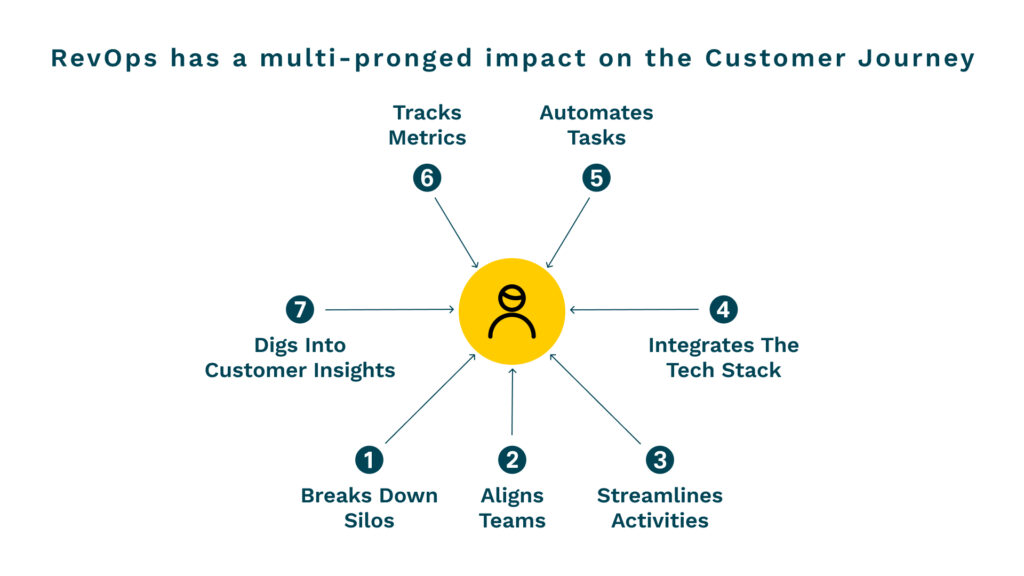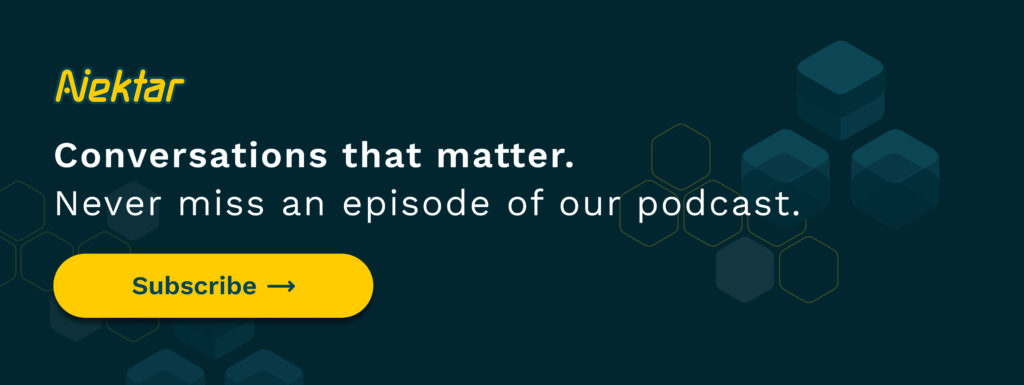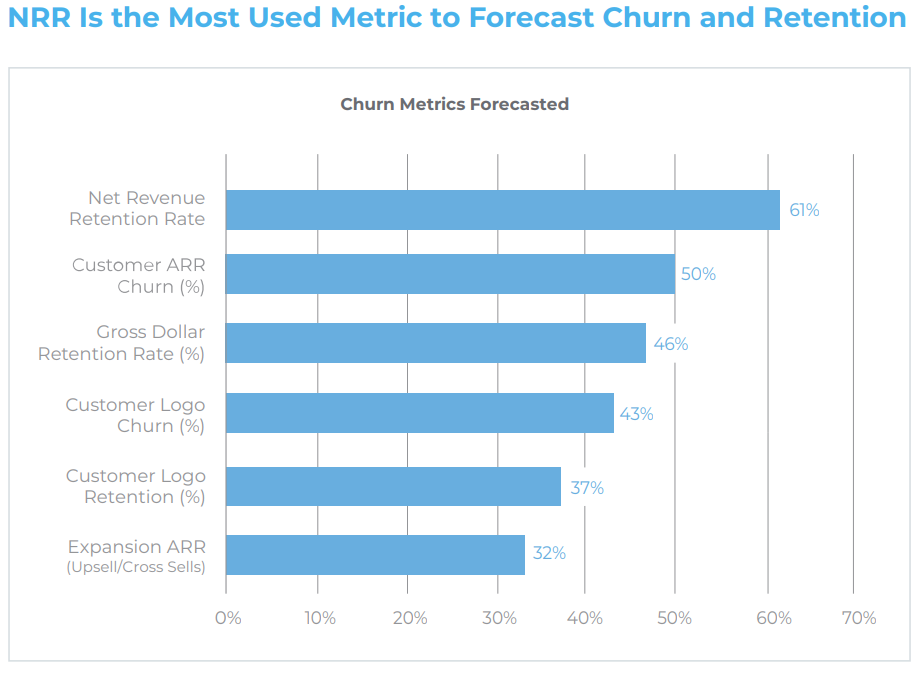RevOps expert Sid Kumar recently spoke to Abhijeet Vijayvergiya about the the importance of customer retention in lean times. And how HubSpot views customer retention from a RevOps lens.
Sid is the SVP of RevOps at HubSpot and counted among the top 100 RevOps leaders of our times.
Here’s the link to the full conversation:
We have condensed the insights from the interview in this blog.
Customer Retention in the Context of Scaling Business
Loyal customers have a 67% higher average order value than new customers. And the chance of upselling to an existing customer is 60-70% compared to a 5-20% chance of converting new customers.
It’s clear that to scale revenue, you must focus heavily on customer retention. This is particularly important in the current economic scenario where customer demand is low, but the pressure to keep revenue afloat is high.
Customers, too, are demanding more personalized interactions from businesses after conversion. And if you can’t live up to these expectations, they won’t renew with you and turn to competitors.
But businesses are yet to catch up. The global benchmark for acceptable customer churn is 5%, yet 30% of organizations have an unacceptably higher churn rate.
Even if it seems obvious that you should retain customers with solid customer success initiatives, it becomes difficult to keep up when scaling. There are three main reasons behind this:
- More customers to support
- More tools to use
- More touchpoints to sustain
So, how does HubSpot customer retention tide over these challenging times? They use RevOps to nurture customers they already have and adapt strategies to build long-lasting relationships.
Watch the video to the conversation here:
For Hubspot’s Customer Retention, RevOps Focuses Heavily on the Customer Journey
| Traditional RevOps | Modern RevOps |
| Back office, support function | Strategic business function |
Traditionally, ops is viewed as a back office function, more like a sidekick to sales and marketing. The modern RevOps function is similar to a joint business partner, supporting the company with strategy and running operations excellently and rigorously.
What makes revenue operations so critical is that it’s designed to be rather obsessed with customer experience, irrespective of the size of your business.
I think of RevOps as the go-to-market COO. It goes back to that theme around connection, how you bring (sales, marketing, and customer success) teams together and align them around the common mission: serving your customers, prospects, and partners. In that context, if you do well, then revenue growth and new customer acquisition become an outcome.
For HubSpot customer retention, growth is no longer a funnel. It’s a flywheel. And the flywheel consists of acquiring customers, engaging them, and then delighting them enough for them to restart the cycle.
Sid leads the flywheel of GTM strategy at HubSpot. This flywheel has four pillars—marketing, sales, analytics, and customer success—which Sid brings together to run operations horizontally instead of in silos.

This approach to operations gives more clarity on the customer journey across the company. It has a multi-pronged effect:
- Breaking down silos
- Aligning teams
- Streamlining activities
- Integrating the tech stack
- Automating tasks
- Tracking metrics, and
- Digging into customer insights.
RevOps is also about the people, processes, mechanisms, data, and systems that help scale growth.
It tracks every customer interaction to provide a frictionless journey, starting from the first contact to conversion and beyond (including renewal).
Revenue operations follows a holistic goal in that it doesn’t concentrate on sales figures alone. It also considers customer churn and retention rates to grow revenue even when you have fewer new leads coming in.
It’s not to say that there aren’t areas where you need to be functionally deep. There are things that only marketing is going to focus on and things that only sales is going to focus on. But (it’s about) understanding the intersection points that bind those organizations together in the context of solving for the customer.
Doubling Down on Revops to Continually Improve Hubspot Customer Retention
Ops ensures that all functions work together, sets every customer-facing team up for success, and orchestrates a seamless customer experience.
You look at your existing customers and really think about it as a couple of phases after your sales team is closing a transaction, working with your marketing team in the first phases of the customer journey. But a lot of organizations tend to stop there.
Instead of having just one revenue function (like customer success) geared heavily towards customer retention, other functions support retention throughout the buyer journey.
RevOps is all about building a process from the very beginning, one which supports communication, trust, and mutual growth between teams. Improving churn should be an orchestrated, cross-functional effort.
We have one team that does planning for the entire flywheel across marketing, sales and customer success to make sure it holds together as part of an operating plan across our demand side, across what our reps do and our customer success teams deliver on the retention-expansion side.
Doubling down on RevOps to Make Customers Stick
By understanding that customer experience doesn’t end at closing a sale. Once a customer signs up with you, you need to figure out what use cases of your solution appealed to them in the first place for them to come on board.
First, are you helping them get adopted very quickly? Are you getting them activated? Are you helping them get time to value and up and running in a very short, reasonable period of time after that transaction happens? From there, it’s understanding what were the use cases that brought them to you in the first place. If they’re in a particular industry, there may be specific processes or specific areas that they were hoping to leverage your solution for (achieving) specific functional or company objectives.
Then, you must carry that promise by ensuring customers get the value and ROI they seek. Your teams must be disciplined and systematic with the after-sale experience. That’s because retention and expansion are ongoing motions, whereas renewal is the outcome of these activities.
If a customer is getting value, you’re engaged with your customer throughout their life cycle with you, they’re addressing their use cases and then (it) becomes a renewal.
Next, map back the derived value or ROI.
After they’ve achieved their use cases, you need to concentrate on broadening those use cases to other businesses.
Create a balance between renewing contracts on time and looking at expansion opportunities. Drive your solution’s usage and adoption to fulfill the appealing use cases after the customers get activated. You can visit other lines of the business and cross-sell your solution.
Use Data as a Key Driver in the Customer Journey
How can you retain customers if you don’t know how they use your solution? Or what value do they derive from it? Or what are the possible expansion opportunities?
You need visibility to succeed at customer retention. And that visibility comes from data.
Data plays a tremendous role (in customer retention). Data will ultimately turn into — what are your hindsights, what are your insights, what are your foresights.
Understanding the past informs the “why” of your previous performance and then lets you figure out what to do about it in the future.
Data provides key insights for customer-facing teams to refine their strategies, optimize sales and marketing content, and make critical data-driven decisions. It also provides context so you can deliver personalized buyer-seller interactions.
Clean & Unified Data = Accurate Customer Journey VisibilityWhen ops teams work together, they don’t serve individual team goals. Instead, they’re hyper-focused on serving the customer. They work with the same data—using a single source of truth—to discover what’s going on at key touchpoints in the customer journey.
Naturally, having a unified and clean data foundation is the key to having complete, reliable visibility of the customer life cycle.
(High-quality data helps) to think about the different touch points along the customer journey, whether it’s presale or post-sale. And what are the customer interactions or behaviors you want to understand at a micro level. That can help you, as a RevOps professional, provide insights to your stakeholders to deliver more value to customers at different points in the journey.
HubSpot customer retention deploys contextual data for a granular understanding of:
- How a customer uses their solution
- What are the different features or capabilities they prefer
- How it solves the intended use cases
- What are the usage patterns across customers
In a particular vertical or industry, say manufacturing, most customers could use the solution to drive a specific workflow, or in legal, they could use it to drive specific contract and deal approvals. You can leverage those insights to return to other customers in the same industry who may not be aware of these workflows or use cases. And you can share your learnings with them.
HubSpot customer retention uses data from community-based learnings to help customers level up. It uses signals between first and third-party data for deeper insights into how customers operate. It also sees the right touchpoints to encourage expansion and where it makes sense to have a suite-based discussion rather than individual hubs.
Ultimately, you can use contextual data to deliver buyer experiences the way they want, not based on your self-direction or gut.
Leveraging Revops and Unified Data to Mitigate Customer Retention Risks
Even if teams do work to deliver buyer experiences the way buyers want them to, not all can do it well. That’s because they’re unaware of the buyer’s complete journey (including knowing all stakeholders in the buying group); therefore, teams don’t have actionable data.
Resorting to a self-directed journey creates a gap between teams and the customer. By aligning your teams with unified data, you can improve the buying experience and the customer’s journey through the sales funnel, eventually driving revenue growth.
In short, RevOps mitigates HubSpot’s customer retention risks by:
Looking at signals and being proactive in customer engagement across the life cycle. Are you close to the pulse of your customer? What’s happening there? How’s their business evolving through everything that’s happening right now in the macro environment? Are you helping them navigate those changes with the solution? And are you bringing everything the company and your partners have to bear to help them navigate? You have to start there.
Next, it unifies data and uses it to dig deeper into user behavior.
It’s looking at the data side—how do you turn data into insights and predictive signals? That’s where you start to look at the different elements of customer behavior. You start to look at some signals around intent. Bringing those together to look at the signals you’re getting from a digital and usage standpoint on how the customer is engaging.
Then, it’s also about formulating the right mix of digital and 1-to-1 engagement to enrich the customer experience.
The role of digital engagement and one-to-many engagement is really important here. Consider where a human needs to be involved, where you leverage AI and other scaled engagement models versus where you need to have a human involved from beginning to end.
Finally, to mitigate customer churn risks, RevOps needs executive buy-in. Instead of focusing on making only the sales teams happy, RevOps covers the entire customer journey and experience. This calls for organizational-level culture changes, too.
You bring the qualitative and quantitative signals together. It gives you a more holistic picture of what (customer) engagement needs to look like.
Setting up Revops for Customer Retention
Every organization needs a unique RevOps setup to function optimally. But according to Sid, there are 5 core elements that you must include.
1. Pillars
Generally, the three primary pillars of RevOps are marketing, sales, and customer support. For HubSpot customer retention, though, Sid adds analytics to the mix.
Analytics thinks about leveraging data and insights in a very fine-grained manner to drive execution in the context of our programs, how we continue to drive top of the funnel in a systematic way and continue to accelerate performance.
2. Data
Data, specifically accurate, complete, and reliable, serves as a strong foundation across the customer life cycle. It unifies teams with a single source of truth and helps develop shared goals and language.
3. Integration
Integrating customer-facing teams is important. But Revops also enables broader integration with product, finance, and the rest of the organization.
What I realized was that some horizontal capabilities are important to come together and drive that connected go-to-market model internally and support that scale. And I looked at what were those capabilities that we wanted to make sure there were no gaps between the functions. What we decided on here was bringing together planning across the flywheel.
4. Systems
Systems include the tech stack and automation capabilities that run the business efficiently. They can optimize your scaled GTM model.
It’s about—what processes and mechanisms bring this connected go-to-market model to life? How do you bring marketing, sales, and customer success together? How you drive that alignment with product, with finance, with people operations, etc., ultimately in the context of again working backward from that customer journey.
5. Talent
The final piece of the puzzle is people and talent. With a heavy focus on customers, losing the plot with employees may be easy.
Think about rep experience alongside buyer experience. Understand how your talent today differs from five to ten years ago and the areas in which they need additional coaching.
Once you have these 5 elements, start tracking your retention success.
Leading Indicators to Test Customer Retention Success
To Sid, the most important indicator to track HubSpot customer retention success is tying usage to value. That is, how customers use your solution to address their use cases and derive value. It could be through specific features, workflows, or data.
It’s really getting clear on what value means to a customer and how do you work backwards from that to get signals and leading indicators.
The second leading indicator is monitoring “time to first engagement” from “time to sale.” It tracks how you engage from a services or partner standpoint to get customers onboarded and activated.
Then come first and third-party signals. Check how often your customers engage with customer support, communities, or other people in your network, on topics related to your solution.

Finally, net revenue retention, or NRR, is one of the top customer retention metrics for SaaS companies. It helps you understand account health and pivot customer success strategies in line with changes.
Other metrics you can keep an eye out for include:
- Customer ARR Churn
- Gross Dollar Retention Rate
- Customer Logo Churn
- Customer Logo Retention
- Expansion ARR

Turn a New Page on Customer Retention With RevOps
Efficient and sustainable growth comes with customer retention, as HubSpot rightly embodies using a solid RevOps engine fuelled by clean and unified data.
You can build an effective RevOps function, too.
That’s where Nektar can help. Reach out to us to find out how we plug gaps in your RevOps process, provide complete visibility into account data, and streamline ops for customer retention.
About Nektar
Nektar is an industry-first RevOps platform that unifies data capture by automatically gathering and integrating full-funnel activity. It makes clean and accurate contact data available to all frontline teams. The platform secures data integrity and maintains hygiene for a true view of your sales pipeline and revenue intelligence.
Nektar further integrates the revenue tech stack to amplify ROI. It gathers data from multiple channels, including email, calls, Slack, and more.
But why stop there? We also consolidated our ultimate guide to RevOps roadmap ebook after speaking to 150+ revenue leaders. In this free guide, you’ll find templates, checklists and plans on how to build your very own RevOps roadmap!








